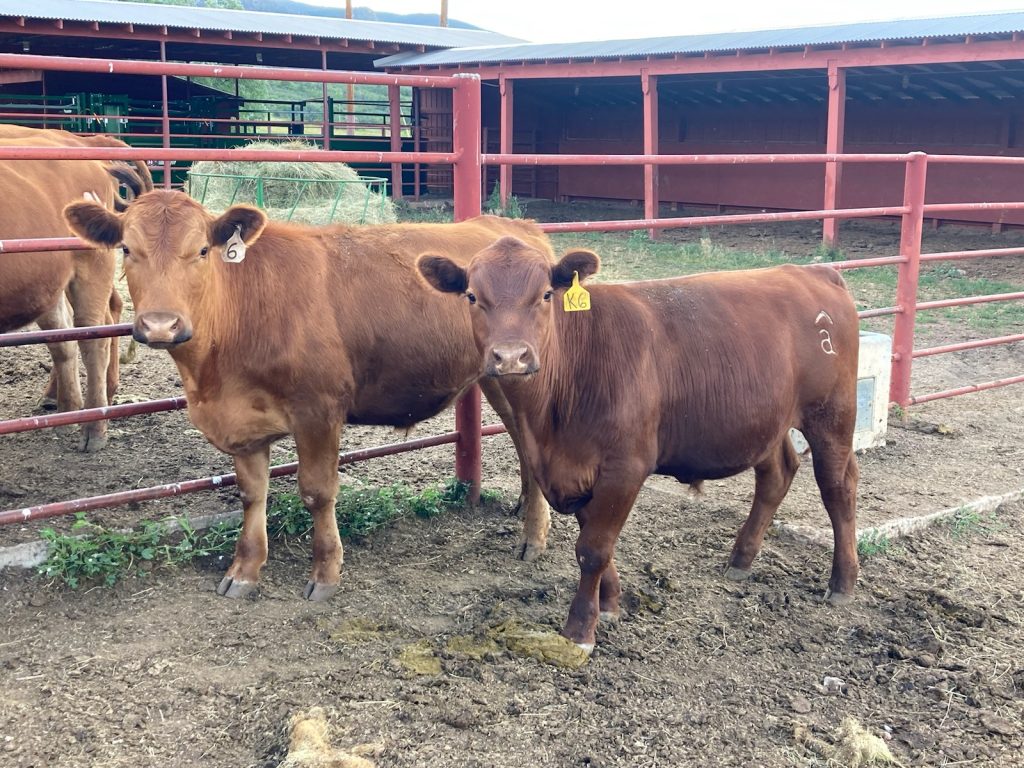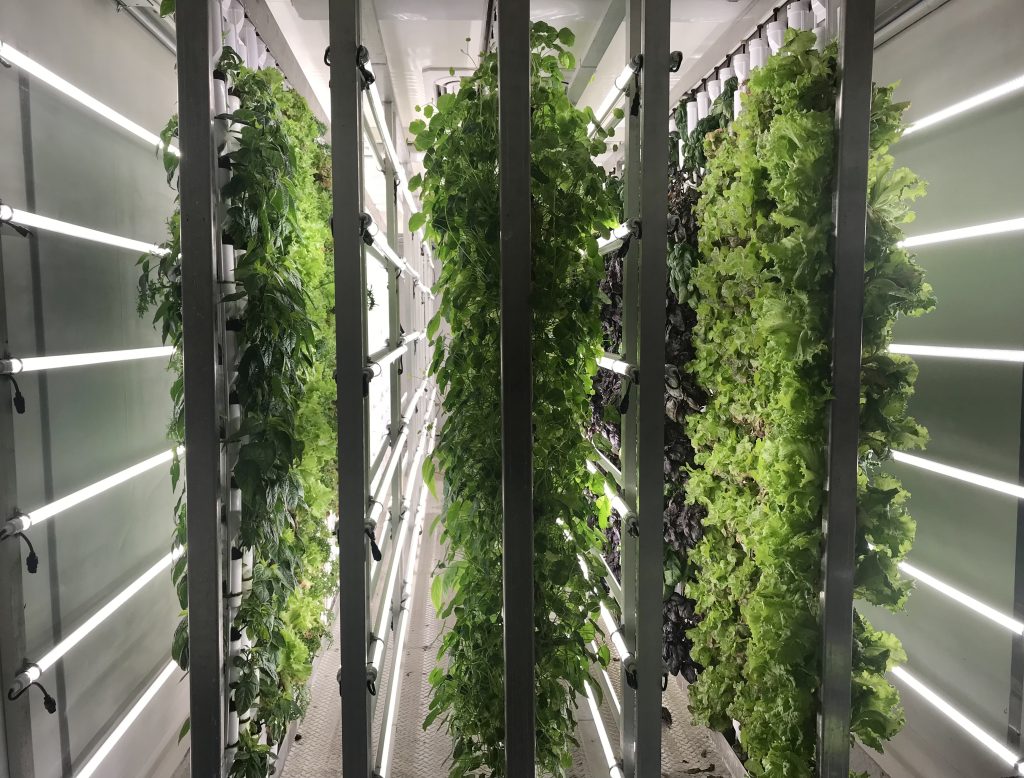Shipping containers newest farming option in controlled climate

FoodBox6
In a unique, non-traditional farming method of growing farm fodder inside a huge 40-foot long shipping container with automated climate control known as a Hydroponic Fodder Farm, people can harvest a staggering amount of barley grass through FarmBox Foods. Three tons of fodder/barley grass; coarse food for livestock produced daily can feed 25 horses, 30 beef cattle, 150 goats or 50 alpacas. FarmBox Foods, based in Sedalia, Color., 25 miles south of Denver grows food for farm or zoo animals inside the massive 40-foot long insulated, up-cycled shipping containers — shipped almost everywhere in the world.
A video about the Hydroponic Fodder Farm hit 600,000 views on YouTube Feb. 5, 2024. A 15-second video of fodder being harvested drew 22 million views on Instagram in February.
At the recent Colorado Farm Show, visitors reaction was staggering, upon seeing container farms produce food for animals, as well as the company FarmBox Foods’ two other types of container farms that produce food for people. “People were pretty blown away. We brought an entire block of mushrooms in on our table. A lot of people who attend these shows are traditional farmers, so this is a new way of farming. We’re not here to replace traditional farms or farmers — we’re here to supplement what they do,” said Chris Michlewicz, spokesman for FarmBox Foods. The fodder farm was developed a year ago.
FarmBox Foods also created two types of shipping containers that grow food for people; the Gourmet Mushroom Farm which debuted in 2020, and the Vertical Hydroponic Farm launched in 2018. The company was formed in 2017.

CLIMATE CONTROL
Inside the shipping container, the climate-controlled environment is automated to maintain a consistent temperature, humidity, nutrient concentration like phosphorus, nitrogen, potassium and the pH level in the water.
“This is soil-less growing. All hydroponic, using water, and we use grow plugs where the seed goes in. The plug sits in our wall and the plants grow out of that plug,” Michlewicz said.
The grow plugs are used in their Vertical Hydroponic Farm to grow food for people like lettuce, vegetables and herbs. However, a different system is used for growing livestock fodder. Livestock feed grows horizontally with no grow plugs or nutrients, even though both types of farms utilize hydroponics. Water is also dosed with nutrients for the Vertical Hydroponic Farm, Michlewicz said.
For the animal feed, one container farm produces 150 tons of fodder a year which is equal to 30 acres of land. “This technology will help ranchers save that amount of land usage, and also reduce water usage in a 99% rate,” said Joaquin Gonzalez, director of fodder systems for FarmBox Farms.

A Colorado rancher and his wife who toured one of the container farms, then formed an experimental partnership with Gonzalez, put some of his steers on the fodder last summer to help the company determine how cattle performed and if they liked it. “Joaquin put together a whole study, based on what we did. Although our steers didn’t gain as much as a grain-fed steer, they did better on the fodder than on pasture grass,” said rancher Bob Welch who raises commercial cows and stocker yearlings near Larkspur, Colo. A container farm wouldn’t fit his set up, since he leases acres, but Welch says, for someone who doesn’t have acres to grass-finish cattle, the FarmBox container could be a great solution.

For barley grass, 130 pounds of barley seed is soaked overnight in a hopper to clean and soften the husk. The hopper is drained and seeds are spread out three-fourths-inch-deep in an 8-foot-long tray (2 feet wide). There are seven of these trays in each rack (six racks total). The seeds are watered several times daily. After spending six days in the tray, the fodder is ready to harvest. They use a staggered growing system to ensure there are seven trays to harvest each day.
FODDER HARVEST
For the fodder, it’s seven days until harvest. However, it’s a totally different growing cycle for growing food for people. The average head of lettuce and mushrooms each takes about 55 days from seed to harvest.
By staggering the growing schedule, you have something to harvest every week, Michlewicz said. “The Vertical Hydroponic Farm can grow around 8,000 plants simultaneously, but they’re in different stages of growth,” he noted.
Through this controlled climate method, they eliminate one of the most uncontrollable parts of the job; weather. People can grow food year-round. This is a lifeline for drought areas and arid environments like Arizona and Texas.

“We’re at the point where science and tech can feed people where they are. That’s the reason we got into the business, because nobody should go hungry,” Michlewicz said. Also, when animals are eating this fodder, they’re actually getting hydrated because its water-dense.”
All three of FarmBox Foods’ container farm showrooms are in Sedalia. Their 140-thousand-square-foot manufacturing plant is near Denver International Airport, where they can build 20 container farms each month. The company is a member of the Colorado Farm Bureau and on the Douglas County Farm Bureau Board.
Natural Grocers based in Colorado is working in conjunction with FarmBox; growing lettuce in a container farm out back, then carrying newly-harvested lettuce inside for sale.
FarmBox Foods has partnered with restaurants, education and health care systems, also prisons to help provide jobs later.
These container farms have been shipped across the U.S., including Montana, Maryland, Florida, Missouri, Alaska, in Canada, and also in Tahiti and Grand Cayman. The container farms travel by ship, rail and truck.
The mushroom farm is their biggest seller, as gourmet Oyster and Lion’s Mane mushrooms are popular but costly now.

“Ninety percent of island food is typically shipped in. Our Tahiti customer figured out if you get production there on the island and nobody is growing mushrooms (naturally), you can get $40 a pound, while harvesting 400 pounds of mushrooms per week,” Michlewicz said.
Two container farms were delivered to Soldotna, Alaska, southwest of Anchorage. They can run in cold or warm weather.
HOW IT BEGAN
The idea to start farming in shipping containers evolved after an original plan of creating tiny homes to increase affordability experienced red tape and delay.
“But on the outside, we had vertical grow tubes so people could grow mini-gardens. We brought those grow tubes inside, to see if they could turn the shipping container into a grow farm,” Michlewicz said. The rest is history.

The Hydroponic Fodder Farm’s creation was a collaboration between Joaquin Gonzalez, director of fodder systems and the main fabricators, Jason Brown and Jesse Gantzler. FarmBox Foods is a privately funded company. Their manufacturing partner is RK Mission Critical.
The cost of a container farm is $200,000 and customers typically buy them, but lease options are also available.
FarmBox Foods requests people pour concrete footers to prevent shifting, so if/when ground shifts, it wouldn’t affect their water and ability to grow effectively. These shipping containers have R-19 and R-21 insulation.
The farms are seed to harvest — the entire process is there — inside the shipping container.
They teach customers what grows in there, and what doesn’t grow so people know what to expect.
For more information, go to http://www.farmboxfoods.com, call: 1-800-946-1723, or email info@farmboxfoods.com.


